How to Choose the Right Wire Gauge for Your Project
Choosing the correct wire gauge for your electrical project is essential to ensure safety, performance, and code compliance. Whether you’re wiring a home circuit, setting up a solar power system, or building an automotive rig, using the wrong wire gauge can lead to overheating, voltage drops, or even fire hazards. In this guide, we’ll break down everything you need to know about selecting the proper wire gauge based on current, voltage, distance, and application type—so your project runs smoothly from start to finish.
- Understanding Wire Gauge and Its Role in Electrical Systems
- How Wire Gauge Affects Current Carrying Capacity
- Choosing the Right Wire Gauge Based on Distance
- Selecting Wire Gauge for AC vs DC Applications
- How to Determine Wire Gauge Based on Appliance Load
- Wire Gauge Selection for Solar RV and Off-Grid Systems
- Factors That Influence Wire Gauge Sizing Decisions
- Code Compliance and Wire Gauge Standards
- Mistakes to Avoid When Choosing Wire Gauge
- Tools and Resources to Help Determine Proper Wire Gauge
- Final Thoughts on Choosing the Right Wire Gauge
Understanding Wire Gauge and Its Role in Electrical Systems
What Is Wire Gauge?
Wire gauge refers to the diameter or thickness of a conductor (typically copper or aluminum). In North America, the most common system is the American Wire Gauge (AWG), where a lower number means a thicker wire. For example, 12 AWG is thicker than 18 AWG.
Why Wire Gauge Matters
The wire gauge directly affects:
Current carrying capacity (amperage)
Resistance and voltage drop
Heat generation
Code compliance
Choosing an incorrect wire gauge can result in inefficiencies or hazards.
How Wire Gauge Affects Current Carrying Capacity
Ampacity Explained
Ampacity is the maximum amount of electrical current a wire can carry safely. Each wire gauge has a rated ampacity depending on:
Conductor material (copper or aluminum)
Insulation type and temperature rating
Installation conditions (in conduit, in air, buried, etc.)
Common Wire Gauge and Amp Ratings
|
Wire Gauge |
Copper Ampacity (60°C) |
Common Use Cases |
|
18 AWG |
10 Amps |
Small electronics, LED |
|
14 AWG |
15 Amps |
Lights, outlets |
|
12 AWG |
20 Amps |
Kitchen, bathroom circuits |
|
10 AWG |
30 Amps |
Water heaters, AC units |
|
6 AWG |
55 Amps |
Subpanels, EV chargers |
Always verify with NEC (National Electrical Code) or local regulations before installation.
>>See also Should Battery Cells Be Packed Tightly or Given Space
Choosing the Right Wire Gauge Based on Distance
Voltage Drop Considerations
Long wire runs experience voltage drop, where electrical energy is lost as heat due to resistance. To combat this, a thicker wire gauge is required for long distances.
How to Calculate Voltage Drop
Basic formula:
Voltage Drop = (2 × Length × Current × Resistance per foot) ÷ 1000
Online voltage drop calculators or NEC Chapter 9 Tables help determine the appropriate wire gauge for distance-sensitive projects.
Acceptable Drop Limits
3% max for sensitive electronics or lighting
5% acceptable for most general circuits
Example: A 12V system drawing 20A over 30 feet requires 8 AWG instead of 12 AWG to stay within voltage drop limits.
Selecting Wire Gauge for AC vs DC Applications
AC Circuits (120V/240V)
Most home or commercial AC wiring falls into 14–6 AWG depending on amperage. Lower voltage sensitivity means less extreme upsizing is required.
DC Circuits (12V/24V/48V)
In DC applications—such as solar systems or RVs—voltage drop becomes more critical. Lower voltage means you need larger wire gauges for the same amperage.
Example: A 12V fridge drawing 10A over 15 feet should use 10 AWG wire or thicker.
How to Determine Wire Gauge Based on Appliance Load
Understanding Wattage, Voltage, and Amperage
Use Ohm’s Law to determine current:
Amps = Watts ÷ Volts
Once you have the amperage, you can match it to the correct wire gauge.
Example:
1500W space heater at 120V = 12.5 Amps
Use 14 AWG minimum, but 12 AWG preferred for continuous loads
Continuous vs Intermittent Loads
Continuous loads (running >3 hours) should be derated by 80%
NEC recommends using larger wire gauge for continuous loads to prevent overheating
Wire Gauge Selection for Solar, RV, and Off-Grid Systems
Solar Array to Charge Controller
High current and low voltage (12V or 24V) mean that a thicker wire gauge is essential to reduce voltage drop. For example:
12V system, 40A, 20 feet = Use 6 AWG or thicker
Inverter to Battery Connections
This is where the highest currents occur. A 2000W inverter at 12V could draw over 150A—requiring 2 AWG or thicker wiring, depending on length.
RV and Van Builds
Mobile applications demand tight voltage control. Many van builders underestimate the wire gauge needed, leading to underperforming appliances or system faults.
Factors That Influence Wire Gauge Sizing Decisions
Temperature Rating of Insulation
Higher temperature-rated insulation (e.g., THHN vs NM-B) allows a higher amp rating for the same wire gauge.
Conduit Fill
If wires are enclosed in conduit, the heat buildup limits the ampacity. You may need to increase wire gauge or reduce circuit load.
Environmental Conditions
Outdoor, marine, or underground wiring may require specific jackets or a heavier wire gauge to meet code and durability standards.
Code Compliance and Wire Gauge Standards
NEC and Local Codes
Always cross-check with NEC guidelines and local building codes. Many require a minimum wire gauge depending on application (e.g., 14 AWG minimum for residential).
UL and CSA Certifications
Wires should be certified by UL (U.S.) or CSA (Canada) to ensure safe operation under listed ampacities and temperature conditions.
>>See also Ways to Reactivate NP45 Lithium Batteries Safely
Mistakes to Avoid When Choosing Wire Gauge
Undersizing Wires
Using too thin of a wire gauge can result in:
Excessive heat
Circuit breaker tripping
Damaged appliances
Fire hazards
Overcomplicating the Process
Don’t rely solely on intuition. Use online calculators or manufacturer specs to pick the right wire gauge every time.
Forgetting to Plan for Future Load Increases
If you plan to add more devices or upgrade your system, oversizing your initial wire gauge by 1–2 steps may save rewiring costs later.
Tools and Resources to Help Determine Proper Wire Gauge
Online Calculators
Web-based calculators allow you to plug in:
Voltage
Amperage
Distance
Circuit type
...and instantly recommend a suitable wire gauge.
Manufacturer Charts
Wire manufacturers often provide official ampacity charts and voltage drop tables that simplify selection based on UL standards.
Final Thoughts on Choosing the Right Wire Gauge
Getting the correct wire gauge for your project ensures performance, safety, and compliance. Whether you’re installing lights, setting up a solar system, or wiring your camper van, the right wire prevents voltage loss, heat buildup, and expensive do-overs. Always calculate based on amperage, voltage, and distance, and verify against NEC standards or manufacturer specs.
In summary, selecting the proper wire gauge is more than just picking a number—it’s about understanding your system’s electrical demands and matching them with wires that can carry the load efficiently. When in doubt, go thicker, follow the codes, and use reliable tools to make your decision.
Making the right wire gauge choice at the start will save you time, money, and headaches down the road.

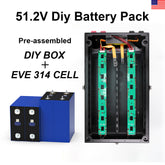

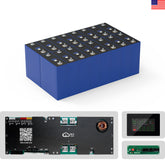

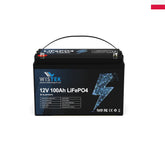
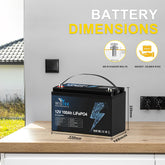

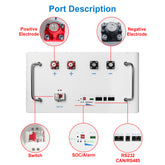
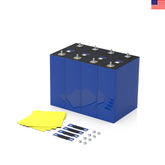



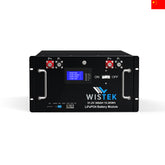
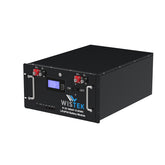
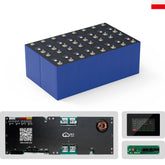








Leave a comment
All blog comments are checked prior to publishing